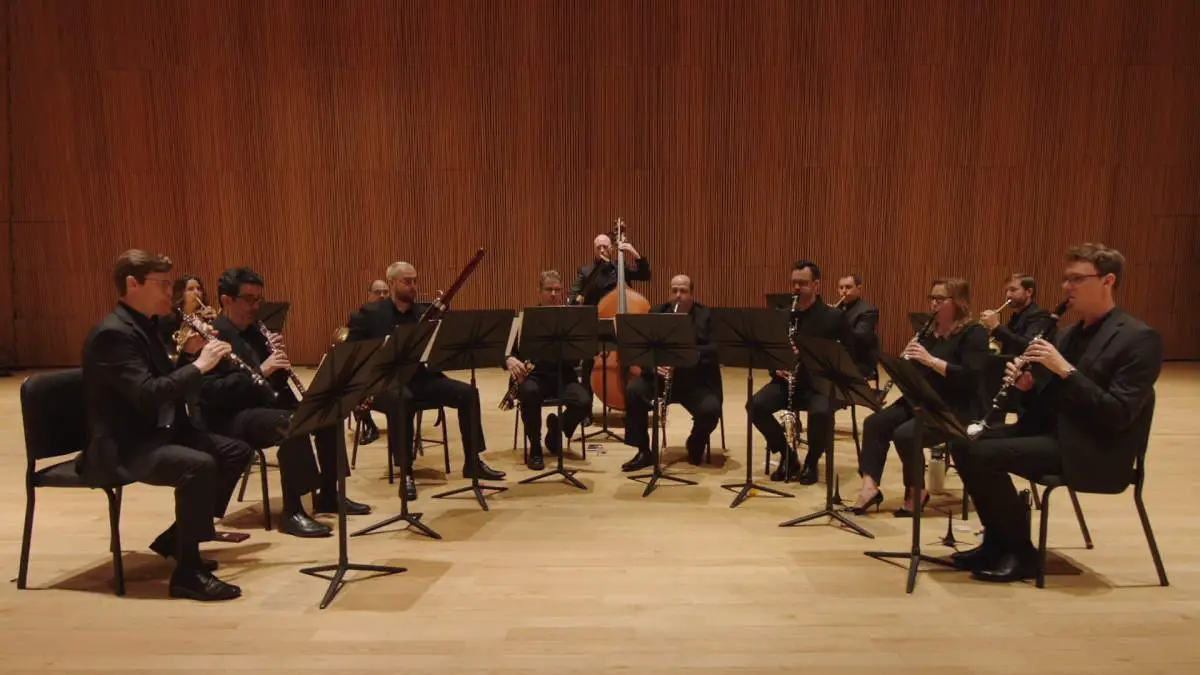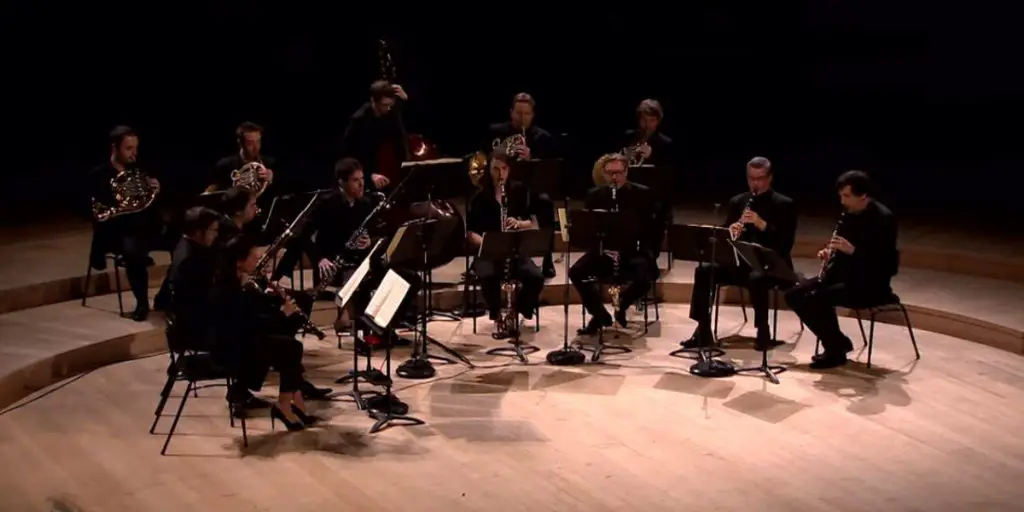The MET Orchestra Chamber Ensemble performs Wolfgang Amadeus Mozart’s Serenade No. 10 “Gran Partita” for winds in B-flat major, K. 361/370a.
Musicians
- Nathan Hughes, oboe
- Pedro Díaz, oboe
- Anton Rist, clarinet
- Jessica Phillips, clarinet
- Dean LeBlanc, basset horn
- David Gould, basset horn
- Evan Epifanio, bassoon
- Mark Romatz, bassoon
- Brad Gemeinhardt, horn
- Hugo Valverde, horn
- Javier Gandara, horn
- Anne Scharer, horn
- Brendan Kane, bass
Wolfgang Amadeus Mozart’s Serenade No. 10 “Gran Partita”
Wolfgang Amadeus Mozart’s Serenade No. 10 for winds in B-flat major, K. 361/370a, known as the “Gran Partita,” is a monumental piece in the classical wind ensemble repertoire. Composed around 1781-1782, this serenade is famed for its rich textures and the depth of its character, setting it apart from much of the light, entertainment-focused music of the era. The “Gran Partita” is particularly noted for its expansive instrumentation and sophisticated structure, which comprises seven movements, each showcasing Mozart’s innovative approach to wind music.
Movements
With start times in the video:
- [00:00] Largo – Molto Allegro: Opens with a stately introduction, leading into a lively and joyous Allegro. The movement is robust, featuring playful exchanges between instruments.
- [09:38] Menuetto – Trio I – Trio II: A traditional minuet with two contrasting trios. The first trio adds a rustic feel, while the second trio, featuring more chromatic lines, offers a delicate contrast.
- [18:02] Adagio: Known for its exquisite beauty and lyrical qualities. This movement is often celebrated for its serene and contemplative melody lines, which allow each wind instrument a chance to sing.
- [23:34] Menuetto (Allegretto): Another minuet but lighter and more subtle than the first. The alternating trios continue to explore different textures, enhancing the overall elegance of the piece.
- [28:13] Romanze (Adagio – Allegretto – Adagio): A romantic and somewhat operatic movement. It starts and ends with a tender adagio, sandwiching a playful allegretto that brings a brief, spirited contrast.
- [35:06] Tema con Variazioni: Features a theme and six variations. Each variation allows different instruments to showcase their unique timbres and virtuosic capabilities, highlighting Mozart’s skill in compositional variety.
- [44:55] Rondo (Allegro molto): Concludes the serenade with a lively and spirited rondo. This movement is brisk and joyful, providing a fittingly energetic finale.
The “Gran Partita” is not just a display of technical prowess for wind instruments; it also provides a deep emotional journey. The blend of solemnity, playfulness, and romance in its movements offers a comprehensive showcase of Mozart’s mastery in orchestration and his ability to convey complex emotional narratives through music. This serenade remains a cornerstone of classical wind music, revered for its artistic depth and innovation.

Sources
- Serenade No. 10 “Gran Partita” (Mozart) on Wikipedia
- Serenade in B-flat major, K.361/370a (Mozart, Wolfgang Amadeus) on the International Music Score Library Project website
- Beethoven: Piano Concerto No. 3 [Olga Scheps] - April 30, 2024
- Händel: Dixit Dominus [hr-Sinfonieorchester, Chœur du Concert D’Astrée, Emmanuelle Haïm] - April 29, 2024
- Händel: Solomon [Radio Filharmonisch Orkest, Groot Omroepkoor, Peter Dijkstra] - April 28, 2024

